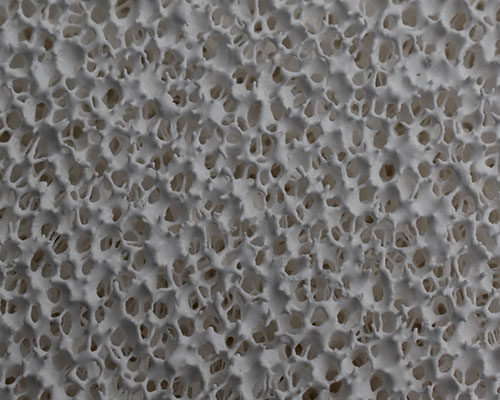The manufacturing process of Foundry Molten Metal Filter is usually to squeeze out excess and dry polyurethane sponge in ceramic slurry, and finally fire and knot at high temperature to form a three-dimensional porous ceramic material with related original bubble structure.
Considering the filtration efficiency and strength, the prepared ceramic foam filter is no longer a three-dimensional network structure. Rather, they are interconnected, twisted, and unevenly thick pipes. This uneven wall surface plays a key role in the capture of small inclusions in the aluminum melt, which is the deep filtration.
This is the fundamental difference between the screen mesh and the ceramic foam filter for casting. This three-dimensional network structure increases the flow path of the aluminum liquid, makes the aluminum liquid contact the filter plate, and increases the adsorption capacity of the inclusion particles.
In the initial stage, surface screening intercepts large particles, while small particles are removed by a deep filtration mechanism. With the formation of surface deposits, the deposits can retain large and small particles. Small inclusion particles can be captured by a deep filtration mechanism. At this time, the filtering effect of the ceramic foam filter will be better.
When the particle adsorption is saturated, that is, the number of particles adsorbed from the melt is equal to that when the particles are carried away by the melt flow, the slag removal ability is reduced.

Filter Mechanism of Foundry Molten Metal Filter
The main purpose of the ceramic foam filter for casting is to remove the inclusions in the aluminum melt. Inclusions in the melt usually exist in three forms: metal oxides, pulverization of refractory materials, and other foreign particles, that is, particles introduced during the smelting process.
There are three ways to remove suspended particles in the melt:
- Sedimentation-the accumulation of particles at the bottom of the melt.
- Floating-mixed floats gather on the surface of the melt.
- Filtration-the separation of particles from the melt through porous media.
Natural sedimentation generally occurs when the particles are dense and coarse, and particles smaller than 90um are not very effective for static sedimentation.

